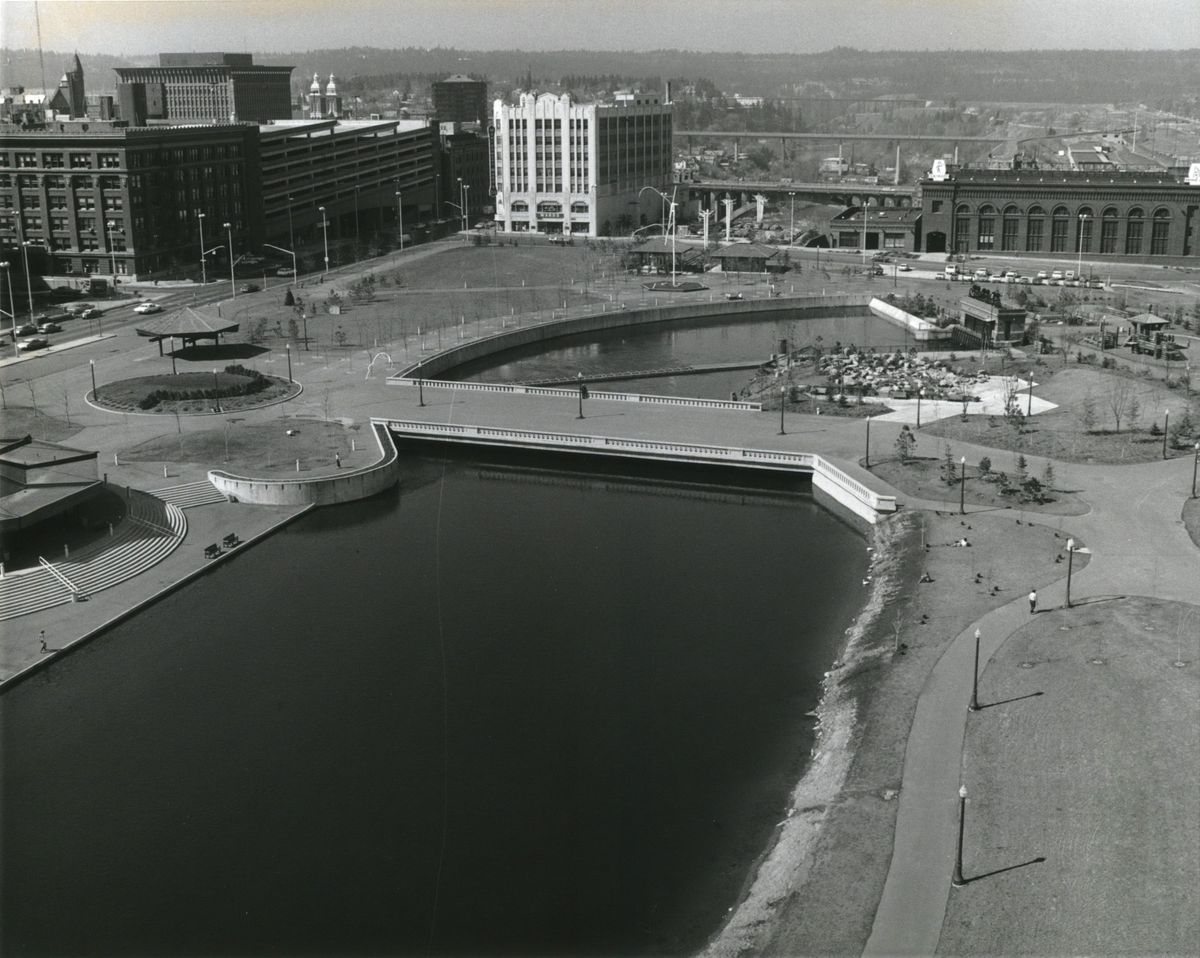Then and Now: South channel

The south channel of the Spokane River played an important role in early Spokane. It was where the first white settlers obtained drinking water, it provided energy for the first lumber and grist mills and is still a reliable source of power for electricity generation.
Though outsiders had traversed the region since the early 1800s and helped establish settlements in Walla Walla, Colville and Missoula, Spokane’s first long-term settlers were James J. Downing and Seth R. Scranton, who claimed squatters’ rights in 1871. They built a “muley” sawmill, a single vertical blade moving up and down, powered by a water wheel.
James Glover and partner Jasper N. Matheney came to Spokane looking for land in 1873. Glover, who would one day be called the “father of Spokane,” struck a deal for the land and took over the mill.
Anthony Cannon, another early businessman, took over the mill in 1880 and renamed it Cannon Saw and Planing Mill.
In 1885, the lumber company was reorganized as The Spokane Falls Lumber and Manufacturing Co., with E.J. Brickell at the helm.
A group of businessmen founded Washington Water Power in 1889 to develop the Monroe Street Project on the Lower Falls nearby.
The mill burned to the ground in 1892. It took a few years for businessman Simon Oppenheimer to rebuild it as Northwest Milling, but he left town when money ran short. The mill was operated as Sawmill Phoenix from 1898 until 1927, then Long Lake Lumber Co. took over.
A natural pond formed upstream from the mill. Logs were dumped off trains and stored in the pond.
Washington Water Power, which would eventually own the mill property, built the Upper Falls power plant behind the mill in 1921. The company also built the Upper Falls dam on the east end of Havermale Island, enabling the utility to divert water to the Upper Falls and Monroe Street plants during times of low water levels.
Long Lake Lumber closed the mill in 1944, after producing lumber for 70 years. With a few exceptions, the structures associated with the former lumberyard and railroading were eliminated for Expo ’74 and the future Riverfront Park.